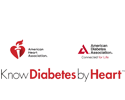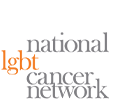Need a Doctor? There’s about a Hundred Apps for That
Remember when the only personal device people had to monitor their health was the trusty old bathroom scale, and maybe a blood pressure cuff they could use at their local pharmacy? What a difference a decade makes.
An explosion of personal, wearable, or otherwise easily accessible devices and apps used to track activity and fitness levels, monitor health problems, and even diagnose disease is well underway. In fact, more than 360 health and biotech (and nearly 390 fitness and sports) apps and products were exhibited at January’s International CES® in Las Vegas, including a new wave of trackers, online tools, wristbands and apps that collect your vital signs for medical purposes.
“Consumers now have more of an opportunity than ever to take control of their own health through technology,” says Kinsey Fabrizio, director, Member Engagement, Consumer Electronics Association (CEA)®. “There is a real convergence of technology in health and wellness, and with design advancements, improving tech and widespread adoption of mobile devices, consumer-centric care is now possible.”
According to Ms. Fabrizio, one of the hottest trends in personal health and fitness technology is devices that link to smartphones. One example of such a device is a fertility sensor from CES exhibitor Prima-Temp: a self-inserted, wireless temperature sensor that continuously and passively tracks a woman’s core body temperature, detecting the subtle changes that occur before ovulation, then sends an alert to her smartphone when she is most fertile. According to the company, understanding reproductive health and natural fertility signs can help couples avoid costly infertility treatments.
Another example comes from another CES exhibitor, Qardio: a wireless blood pressure monitor that offers a full year of battery life for 400 measurements versus the 80 available in typical monitors. The company claims the device—compatible with both iOS and Android—is the only wireless monitor that can track irregular heartbeats over time, providing users with warnings that they should consider contacting a doctor if the irregularity continues.
Wearable technology like fitness trackers, smart watches, and even pain relief technology also took center stage at CES. During a CES presentation, “The Potential of Wearable Technology,” CEA Director of Business Intelligence, Jack Cutts, pointed out that fitness trackers, “have made wearable tech mainstream, and that the newest generation of smart watches are more refined and are becoming the go-to wearable device.” Looking to the future, he said “other wearable technologies, such as smart fabrics and implantable devices, are still being explored.”
Ms. Fabrizio notes that healthcare technology also has become critical to aging in place, as evidenced by several exhibitors highlighting “lifelong tech” solutions that help seniors stay in touch electronically with providers, family members, emergency responders and other caregivers. One example is CES exhibitor MobileHelp, a mobile medical alert system that uses GPS medical alarm location technology to pinpoint the user’s exact location, so the closest available emergency responders are dispatched no matter where the user travels.
Some in the healthcare field—including attendees of CES’s Digital Health Conference—have raised concerns, not only about the privacy of patient data as it streams through the Internet and resides in the cloud, but also that people’s reliance on health and medical devices and apps will push the professional healthcare practitioner out of the equation. Some worry that no self-diagnosis technology can replace the in-person treatment available at a practitioner’s office, while others point to the ability of technology to increase the value and productivity of physicians.
Ms. Fabrizio adds that device and app makers are looking to help shape the future of digital health with products people can access easily. To that end, CEA, which represents 2,000 companies, formed a Health and Fitness Technology Division last year. The goal of the Division is to raise consumer awareness of how consumer electronic devices can help improve health and fitness as well as help manufacturers navigate the marketing, regulatory and myriad other challenges facing this nascent marketing segment.
“These CEA members are making products that are seamless with what people already do,” Ms. Fabrizio concludes. “They are more than fun; they provide valuable data that drives healthier behavior and preventive health benefits.”
Are consumer apps and devices for tracking health and fitness helping you improve your health? Share your opinion in the comments section.



















